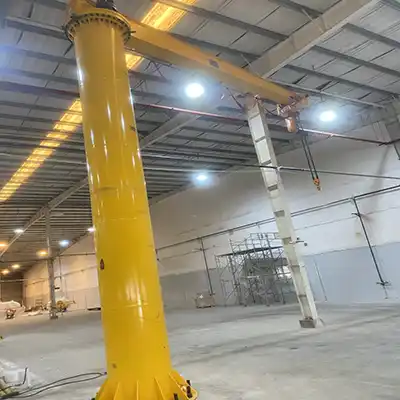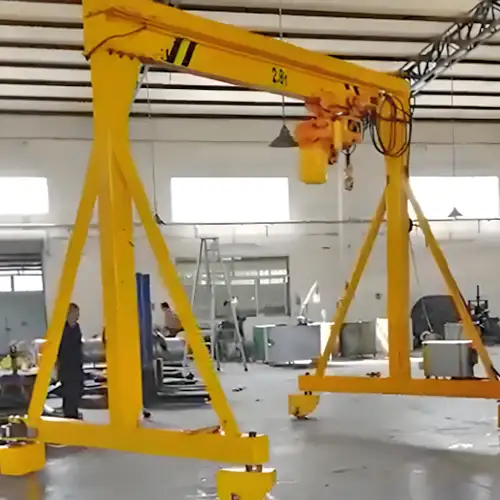
Aluminum vs. Copper: Choosing the Best Lifting Magnet for Your Application
Explore the differences between aluminum and copper for magnet coils, focusing on performance, cost, durability, and suitability for various applications.
Overview of Magnet Materials
Magnets are used in many industries, from electronics and automotive to manufacturing and healthcare. They power devices like motors, generators, MRI machines, and even speakers. The coils wrapped around these magnets are what make them work. When electricity flows through these coils, it creates a magnetic field.
The material used for these coils is very important. It directly affects how well the magnet works, how long it lasts, and how much it costs. Two of the most common materials for magnet coils are aluminum and copper. Both materials have different properties, and these differences determine which one is better for a specific application.
Material Choices for Magnet Coils
What are Magnet Coils?
Lifting Magnet coils are simply wire loops wound around a core, used in various electrical and industrial devices. When an electrical current passes through these coils, they generate a magnetic field. This magnetic field is essential for the functioning of devices like electric motors, transformers, loudspeakers, and MRI machines. The coil material plays a key role in how effectively the magnet performs, impacting both energy efficiency and overall functionality.
The material used for the coils affects their conductivity, weight, strength, and ability to withstand heat and wear. Choosing the right material can improve the performance and longevity of the magnet while reducing operational costs.
Aluminum in Magnet Coils
Physical Properties of Aluminum
- Lightweight: Aluminum is much lighter than copper, making it easier to handle and install, especially in large or complex systems.
- Good Conductivity: While not as conductive as copper, aluminum still provides decent electrical conductivity, making it suitable for many applications.
- Corrosion Resistance: Aluminum resists rust and corrosion, even in harsh or damp environments. This makes it ideal for applications where exposure to moisture or chemicals is a concern.
Common Applications in Magnet Coils
- Low- to Mid-Power Motors: Aluminum is often used in smaller motors where weight savings and corrosion resistance are more critical than maximum conductivity.
- Transformers and Inductors: In some electrical applications, aluminum coils are preferred for their cost-effectiveness and lightweight properties.
- HVAC Systems: Aluminum’s resistance to corrosion makes it suitable for use in air conditioning and heating systems, where durability is essential.
Copper in Magnet Coils
Physical Properties of Copper
- High Conductivity: Copper is one of the best conductors of electricity, meaning less energy is wasted as heat. This makes copper ideal for high-performance applications where efficiency is critical.
- Durability: Copper is highly durable and can withstand high temperatures without degrading. It is also resistant to mechanical stress and wear.
- Heat Resistance: Copper can handle high temperatures without losing its conductivity, making it ideal for high-power applications where the coil may get hot.
Typical Industries and Applications Using Copper in Magnet Coils
- Electric Motors: Copper is widely used in high-performance electric motors, especially in industries like automotive and robotics, where maximum efficiency and durability are essential.
- Power Generators and Transformers: Copper’s excellent conductivity makes it the material of choice for large-scale power generation systems and electrical transformers.
- MRI Machines: Copper coils are commonly used in MRI machines for their high performance and ability to generate strong, stable magnetic fields.
- High-Power Industrial Applications: In industries requiring robust equipment, like manufacturing and energy production, copper coils provide reliability and longevity.
In summary, aluminum and copper each offer distinct benefits for magnet coils. Aluminum is lightweight, corrosion-resistant, and cost-effective, making it suitable for applications where weight and environmental resistance are priorities. Copper, on the other hand, excels in conductivity and durability, making it ideal for high-power, high-performance applications. The choice between these materials largely depends on the specific needs of the application, including efficiency, durability, and cost.

Pros and Cons of Aluminum vs. Copper for Magnet Coils
Aluminum Magnet Coils
Pros:
- Lighter Weight: Aluminum is much lighter than copper, which makes it easier to handle, install, and transport. This can be especially beneficial in large or complex systems where reducing weight is a priority, such as in aerospace and automotive industries.
- Cost-Effective: Aluminum is generally cheaper than copper, both in terms of material costs and manufacturing expenses. This makes it a more budget-friendly option for projects with limited financial resources or for applications where cost is a major consideration.
- Excellent Corrosion Resistance: Aluminum naturally forms a protective oxide layer that resists corrosion. This is particularly advantageous in environments where the coils may be exposed to moisture, chemicals, or other corrosive elements, such as in outdoor installations, marine environments, or HVAC systems.
Cons:
- Lower Electrical Conductivity: While aluminum is a good conductor of electricity, it’s not as efficient as copper. Aluminum coils have about 60% of the electrical conductivity of copper, meaning they may not perform as efficiently, especially in high-power or high-performance applications. This can lead to higher energy losses or the need for larger coils to achieve the same magnetic field strength.
- Less Durability: Aluminum is more prone to physical damage than copper, especially in extreme conditions. It is softer and can become more easily deformed under stress or over time. This reduces its lifespan in high-demand environments, such as industrial machinery or heavy-duty applications.
Copper Magnet Coils
Pros:
- Superior Electrical Conductivity: Copper is known for its excellent electrical conductivity, which is about 40% better than aluminum. This allows for more efficient energy use and a stronger magnetic field with less energy loss. Copper coils are ideal for high-performance applications, such as electric motors, generators, and transformers, where maximum efficiency is essential.
- Higher Durability and Strength: Copper is a much stronger and more durable material than aluminum. It is less likely to be damaged under heavy use, high stress, or extreme conditions. This durability increases the lifespan of copper coils, making them a better choice for long-term, heavy-duty applications.
- Better Performance in High Temperatures: Copper can withstand higher temperatures than aluminum without degrading. This makes it more suitable for high-heat environments, such as industrial machinery, motors, and generators, where consistent performance is required even under intense conditions.
Cons:
- Heavier: Copper is significantly heavier than aluminum, which can add extra weight to the system. This can be a disadvantage in applications where weight is a critical factor, such as in aerospace or transportation industries.
- Higher Material Cost: Copper is more expensive than aluminum, both in terms of raw material costs and manufacturing. This can make copper coils less cost-effective, especially for projects with tight budgets or for applications where the performance benefits of copper are not critical.
In summary, the choice between aluminum and copper for magnet coils largely depends on the specific needs of the application. Aluminum is a good choice for lightweight, cost-sensitive projects where corrosion resistance is important, while copper is the preferred material for high-performance applications where efficiency, durability, and heat resistance are key.
Cost Implications of Using Copper vs. Aluminum
Material Costs
Comparison of Raw Material Costs
- Aluminum: Generally less expensive per unit. Ideal for projects with tighter budgets.
- Copper: More expensive, due to its superior conductivity and strength.
Market Trends and Price Fluctuations
- Copper prices tend to be more volatile due to high demand in various industries such as construction and electronics.
- Aluminum tends to have more stable prices, which may be beneficial for long-term planning.
Production and Manufacturing Costs
Cost Difference in Manufacturing Processes
- Aluminum: Easier and cheaper to process. It is lightweight and flexible, making coil production quicker and less costly.
- Copper: More difficult and expensive to process. It is denser and requires more energy to manufacture, resulting in higher production costs.
Implications for Labor and Material Handling
- Aluminum: Lighter weight reduces handling and transportation costs. Easier to store and move, which lowers labor expenses.
- Copper: Heavier, requiring more specialized tools and labor for handling, leading to higher overall costs in large-scale production.
Long-Term Cost Considerations
Energy Efficiency
- Copper: Higher conductivity reduces energy loss. In applications with high power usage, copper can lead to savings on energy costs.
- Aluminum: While more cost-effective upfront, aluminum coils lose more energy during operation, which can lead to higher energy bills in the long run.
Durability and Lifespan
- Copper: More durable and resistant to wear and corrosion. Typically lasts longer, reducing the need for frequent replacements.
- Aluminum: More susceptible to wear and corrosion, which may lead to higher maintenance and replacement costs over time.
Total Cost of Ownership
- Copper: Although more expensive initially, its efficiency, durability, and lower maintenance needs can lead to lower operational costs and fewer replacements, making it cost-effective in the long run.
- Aluminum: A lower initial cost may result in higher long-term expenses due to more frequent replacements and higher energy consumption.
Choosing the Right Magnet Material for Your Application
Performance Needs
Applications Where High Conductivity is Critical (Copper is Optimal)
- Electric motors: Copper is ideal for motors requiring high efficiency and low energy loss. The superior conductivity of copper ensures that power is transmitted with minimal loss, making it the best choice for high-performance motors in industries like automotive and aerospace.
- Transformers and generators: Copper coils are essential in transformers and generators where efficient energy transfer and high power output are crucial.
- High-current applications: Copper is preferred in applications where large currents are involved because of its low electrical resistance, which minimizes heat generation.
Scenarios Where Aluminum’s Lightweight and Corrosion Resistance Offer Better Value
- Light-duty motors and small appliances: In applications where the magnet or coil doesn’t need to handle high currents, aluminum offers an excellent balance of performance and reduced weight, making it perfect for small electric motors used in household appliances or portable tools.
- Outdoor or marine applications: Aluminum’s natural corrosion resistance makes it ideal for environments exposed to moisture, such as marine or coastal industries, where copper might be prone to corrosion over time.
- Cost-sensitive applications: Aluminum is a cost-effective choice when high conductivity isn’t as critical, such as in low-power or short-term uses.
Budget Considerations
Balancing Performance with Cost Limitations
- Initial Cost vs. Long-Term Savings: If you have a limited budget but need a reliable solution, aluminum can offer a good initial savings, especially for lower-demand applications. However, if long-term performance and energy savings are a priority, investing in copper may be worthwhile despite the higher upfront costs.
- Application-Specific Needs: For high-efficiency or high-durability needs, copper is often the better investment, as its benefits in energy efficiency and longevity can justify the higher price. For less demanding uses, aluminum can keep costs down without compromising too much on performance.
Environmental and Operational Factors
Impact of External Factors on Material Choice
- Temperature: Copper performs better in high-temperature environments due to its ability to handle heat without degrading. Aluminum, while adequate in moderate temperatures, may suffer from reduced conductivity when exposed to extreme heat.
- Humidity and Moisture: Aluminum excels in environments with high humidity or exposure to water, as it naturally resists corrosion. Copper, while durable, can corrode when exposed to moisture unless specially treated or coated.
- Physical Stress: If the coils are subject to heavy physical stress or vibrations, copper’s durability and higher strength make it more reliable. Aluminum is lighter and more flexible but may not withstand extreme physical wear as well as copper.
Conclusion: Contact us to Select The Right Elecromagnet for YOur Needs
Aluminum:
- Pros: Lightweight, corrosion-resistant, cost-effective.
- Cons: Lower electrical conductivity than copper, less durable under high stress or temperature.
Copper:
- Pros: Excellent electrical conductivity, durable, and performs well in high-temperature environments.
- Cons: Higher upfront cost, heavier, more expensive to process and handle.
When choosing between aluminum and copper for magnet coils, the decision depends on the balance of performance needs, environmental factors, and budget considerations.
Final Recommendations
- For High-Performance and Efficiency: If maximum electrical conductivity and durability are key for your application, especially in high-power motors, transformers, or high-temperature environments, copper is the best choice despite its higher cost.
- For Cost-Sensitive and Lightweight Applications: If you're working with a limited budget or require a lightweight material, aluminum can be a suitable option. It’s ideal for lower-power devices or situations where corrosion resistance is a priority.
- Environmental Considerations: For applications exposed to harsh conditions like moisture, chemicals, or saltwater, aluminum’s resistance to corrosion makes it the preferred material. Copper may be the better choice for environments with higher temperatures or heavy physical stress.



